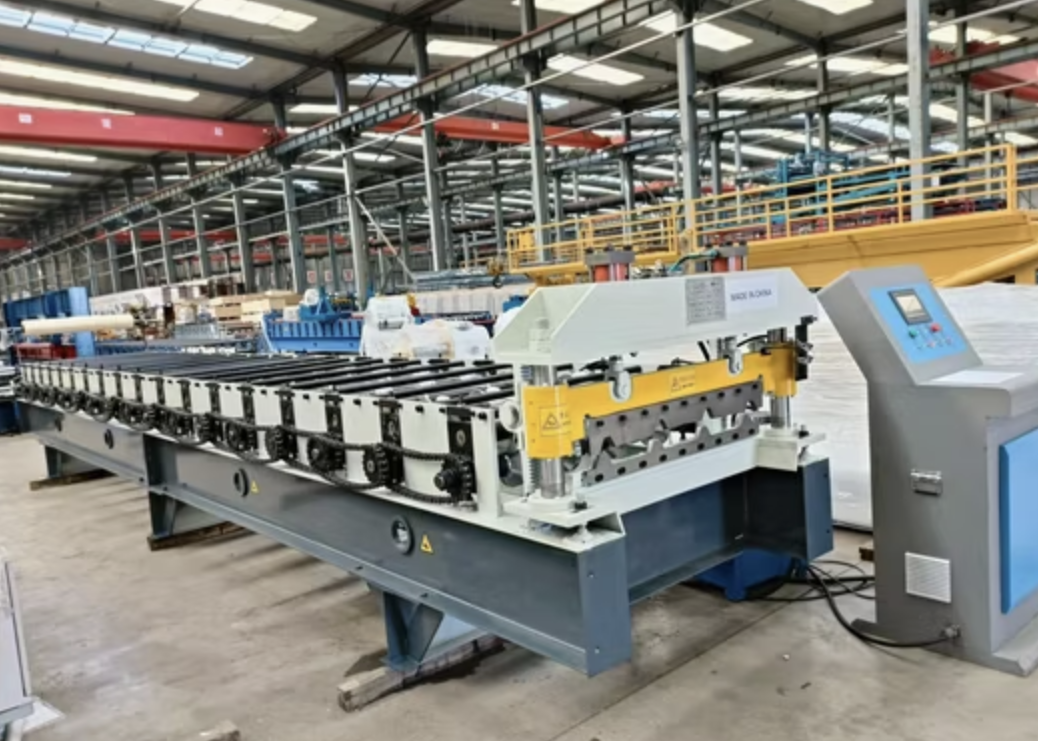To express an interest in this machine please submit the form below.

Not Sure What Machine You Need?
Select Your Profile, We'll Match It
Choose your desired profile drawing, and let Machine Matcher connect you with the best roll forming machine tailored to your needs.
Browse Profiles
A Single Layer Roll Forming Machine is designed for the production of roofing and wall panels in a single layer, commonly used in the construction industry for metal roofing, siding, and cladding applications. This machine transforms metal coils into uniform panels through a continuous rolling process, ensuring precision and consistency with each profile. The single-layer design makes it compact, efficient, and versatile for various profiles and material types, making it an ideal choice for companies with specific profile requirements and limited space or budget for multi-layer machines.
A1: Single layer roll forming machines are versatile and can work with various metal materials, including galvanized steel, aluminum, copper, and zinc. The exact material suitability depends on the profile thickness and machine specifications.
A2: Generally, single-layer machines are designed for one specific profile, but they can be customized with different tooling to accommodate additional profiles. Some models allow quick-change tooling to switch profiles without extensive downtime.
A3: The number of forming stations is based on the complexity of the profile. Complex profiles with multiple bends will require more stations to ensure smooth transitions and precise shaping. Consulting with the machine manufacturer on your profile requirements will help in selecting the ideal configuration.
A4: Regular maintenance is essential for optimal machine performance. Key tasks include lubricating moving parts, inspecting and cleaning rollers, checking alignment, and monitoring the hydraulic system. Many machines come with a maintenance schedule, and some manufacturers offer optional maintenance contracts.
A5: Safety features such as guards, emergency stop buttons, and sensors are crucial. Training operators on safe handling practices and routine safety checks is also essential. Regular audits of the machine’s safety features can ensure ongoing protection.
A6: Yes, many machines offer upgradable PLC systems. Upgrading can enhance automation capabilities, allow remote monitoring, and improve overall operational efficiency, especially beneficial if production requirements change.
A7: The forming speed can vary depending on the profile type, material thickness, and machine configuration but typically ranges from 10 to 20 meters per minute. Adjustments can be made for specific production needs or material characteristics.
A8: Yes, most manufacturers offer machines that can be customized for various regional power standards, ensuring compatibility with local power supplies, which can be critical for global operations.
A9: Common optional extras include stackers, uncoilers, recoilers, remote PLC control systems, and pre-punching or notching units. These extras add convenience and can streamline operations, depending on production scale and needs.
A10: Single-layer machines are ideal for specific profiles and limited space applications, offering simplicity and cost-effectiveness. If multiple profiles or complex production capabilities are required, a multi-layer machine may be better suited to provide the flexibility needed.
Copyright 2026 © Machine Matcher.